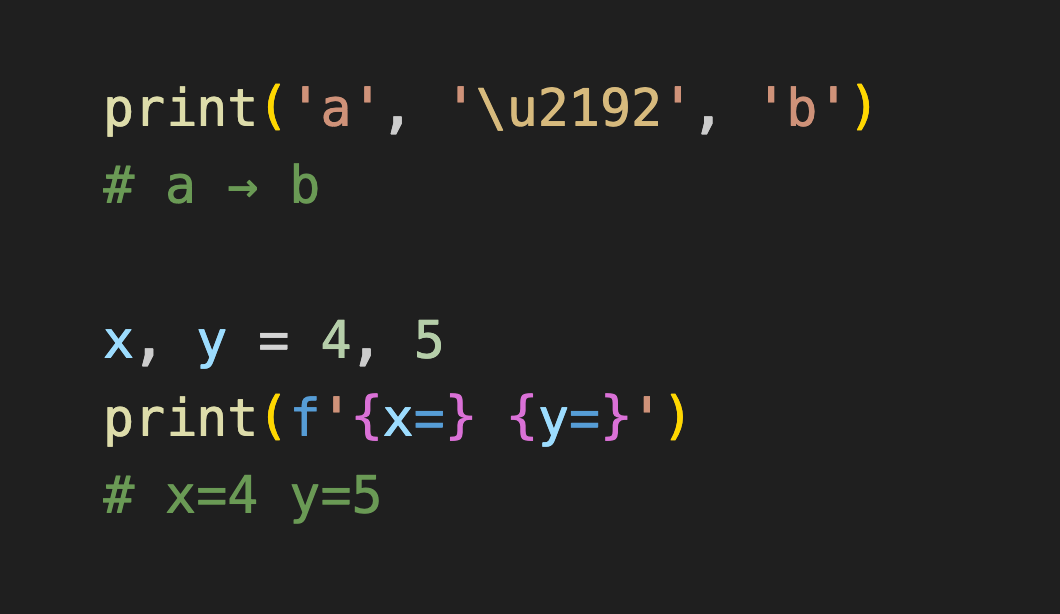Powerful Python String Techniques: 6 Insights to Enhance Your Coding Efficiency
Core Concepts
Python strings offer a wealth of powerful techniques that can significantly improve coding efficiency and productivity.
Abstract
The article discusses six valuable insights about Python strings that the author wishes they had known earlier in their development journey.
The 'string' module: This built-in module provides a convenient way to access common string-related constants and functions, such as all the alphabets, without the need to manually type them out.
String formatting: Python offers multiple string formatting options, including f-strings, .format(), and % operator, each with its own advantages. Understanding the differences and appropriate use cases can streamline string manipulation tasks.
String methods: Python strings come with a rich set of built-in methods that can perform a wide range of operations, from basic manipulation to advanced text processing. Familiarizing oneself with these methods can greatly enhance coding efficiency.
String slicing: The ability to extract substrings from a larger string using slicing is a powerful technique that can simplify many string-related tasks, such as data extraction and transformation.
String concatenation: Efficiently concatenating strings is crucial, and Python provides several options, including the '+' operator, the join() method, and f-strings, each with its own performance characteristics and use cases.
Unicode and encodings: Understanding Unicode and character encodings is essential for handling internationalized text data correctly and avoiding common pitfalls, such as encoding errors and unexpected character behavior.
6 Python String Things I Regret Not Knowing Earlier
Stats
None
Quotes
None
Key Insights Distilled From
by Liu Zuo Lin at zlliu.medium.com 06-29-2024
https://zlliu.medium.com/6-python-string-things-i-regret-not-knowing-earlier-6c777942e8c2
Deeper Inquiries
How can these Python string techniques be applied to solve real-world data processing and text manipulation challenges?
These Python string techniques can be incredibly useful in solving real-world data processing and text manipulation challenges. For example, utilizing the string module can simplify the process of working with alphabets, digits, and punctuation characters. This can be particularly handy when cleaning and normalizing text data, such as removing unwanted characters or extracting specific types of information from a string.
Moreover, understanding concepts like string interpolation and formatting can greatly enhance the readability and maintainability of code when dealing with dynamic text generation or output. By leveraging techniques like f-strings or the format() method, developers can easily insert variables or expressions into strings, making it easier to construct complex messages or reports.
Overall, these Python string techniques provide developers with powerful tools to manipulate, analyze, and process textual data efficiently, ultimately improving the effectiveness and robustness of their data processing workflows.
What are the potential performance implications of different string handling approaches, and how can developers choose the most efficient method for their specific use cases?
Different string handling approaches in Python can have varying performance implications depending on the specific use case. For instance, using string concatenation with the + operator to build large strings can be inefficient due to the immutable nature of strings, leading to the creation of multiple intermediate string objects. In such cases, using methods like join() or f-strings can offer better performance by reducing unnecessary string object creations.
Additionally, when working with large datasets or processing intensive text operations, developers should consider the memory overhead of certain string operations. For example, using regular expressions for complex pattern matching can be powerful but may consume more memory compared to simpler string manipulation methods.
To choose the most efficient method for their specific use cases, developers should consider factors such as the size of the data, the frequency of string operations, and the complexity of the manipulations required. Conducting performance testing and profiling can help identify bottlenecks and optimize string handling code for better efficiency.
What other advanced string-related features or libraries in Python could further enhance developers' ability to work with textual data effectively?
Python offers a variety of advanced string-related features and libraries that can further enhance developers' ability to work with textual data effectively. Some of these include:
Regular Expressions (re module): Regular expressions provide a powerful way to search, extract, and manipulate text based on patterns. The re module in Python allows developers to perform complex string matching operations, making it ideal for tasks like data validation, parsing, and text extraction.
TextBlob: TextBlob is a Python library built on top of NLTK and Pattern libraries, offering simple API methods for common natural language processing (NLP) tasks. It provides functionalities like part-of-speech tagging, noun phrase extraction, sentiment analysis, and translation, making it a valuable tool for text analysis and processing.
spaCy: spaCy is a popular NLP library in Python known for its speed and efficiency in processing large volumes of text. It offers features like named entity recognition, dependency parsing, and tokenization, making it suitable for tasks requiring advanced linguistic annotations and information extraction.
By leveraging these advanced string-related features and libraries, developers can access a wide range of tools and functionalities to handle textual data effectively, from basic string manipulations to complex NLP tasks.
0
